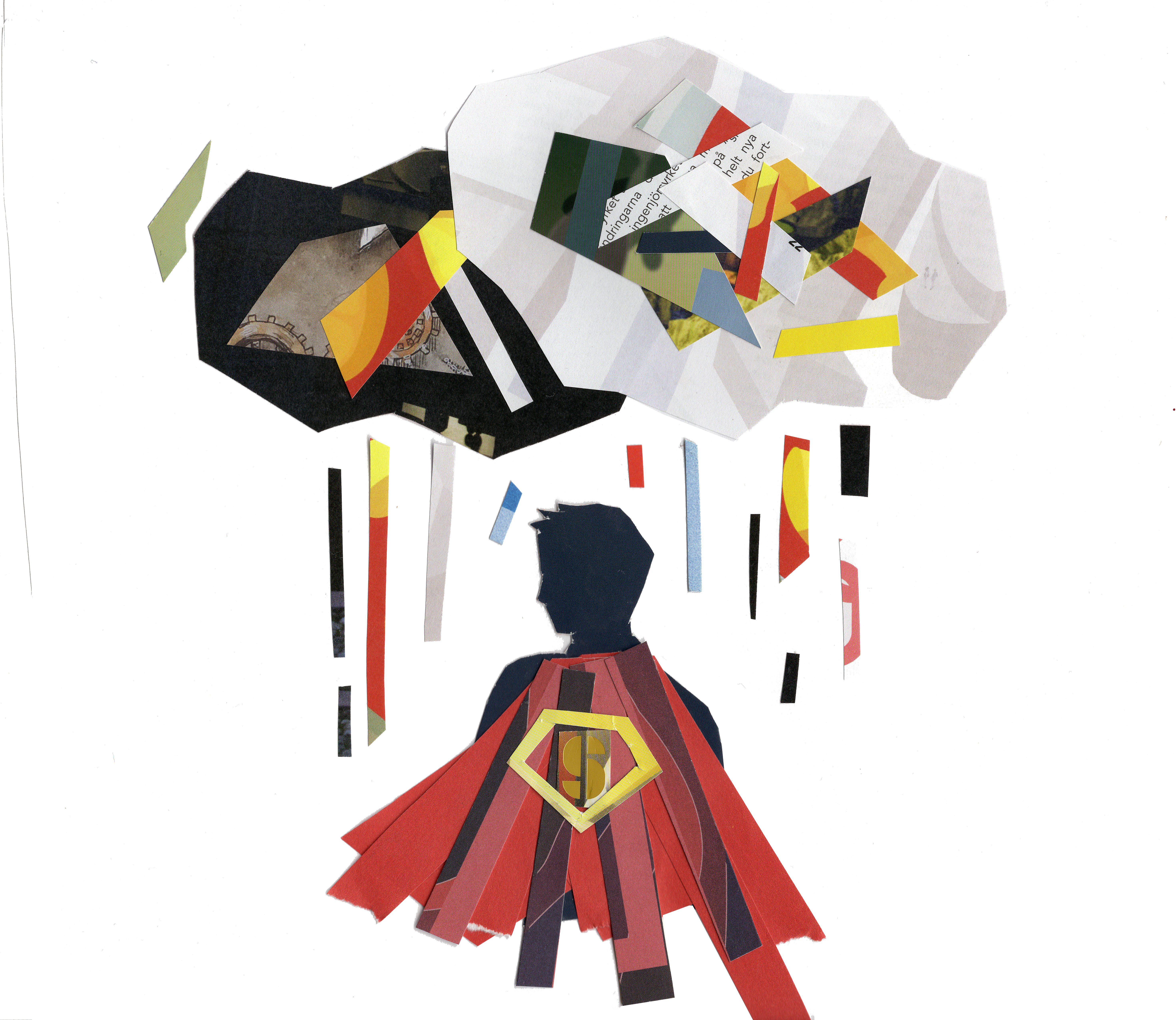Pop Disease

Anna Barysheva - Authoranna.barysheva@osqledaren.se

Rebecka Ingram - Illustratorrebecka.ingram@osqledaren.se
In the late 18th and 19th centuries, tuberculosis has become an epidemic, claiming a quarter of the European adult population. Despite the high mortality and devastating consequences, it was perceived with a touch of tragic loveliness and mystery. Deadly fate was considered flattering and its ravages were frequently represented in a romantic light. Flushed cheeks, pale skin, skeleton body, and ill fragility became inextricably linked with beauty standards. Take for instance corsets and cosmetics that helped to achieve this desirable consumptive look.
I used this example as a vivid illustration of how mass culture has idolized certain types of illnesses. Now we can clearly see a similar trend towards romanticizing not physical but mind illnesses that are often portrayed in an unrealistic way. With pop culture examples, we will show how inaccurate representations of mental illnesses cause twists of perception and why this might be dangerous.
Literary archetype referring to a character reflecting on their own existence and often being rejected by society has been reimagined by great minds as time progresses. In the 19th century, the Romantic Hero transformed into a Byronic Hero first illustrated in Byron's semi-autobiographical poem "Childe Harold's Pilgrimage" which was widely publicized. The Byronic Hero is not better than anyone else or perfect, he is melancholic, in most cases egoistic and arrogant. Being a protagonist, this distasted character is always in the spotlight. Once disappointed or bored with his life, the Byronic Hero sometimes freely discusses and romanticizes suicide.
Does this type of hero remind you of anyone? Does it not look similar to the characters pop culture presents to the audience nowadays? Well, I can start with some examples that came to my mind: Michael Corleone from "The Godfather" is recognized as one of the most iconic villains in film history, the Dark Knight, or Batman, and Joker, Tyler Durden from "Fight Club", Dolores Abernathy from HBO’s series “Westworld”, or - may the readers forgive me, even Edward Cullen from the well-known Twilight Saga. Taking things to the next extreme, having mental illnesses and/or a dark past that shapes a hero's personality makes a character more intriguing and entertaining for the audience. Continuing with the examples, Peter and Paul from a psychological thriller “Funny Games” by Michael Haneke, Alex freaked out both readers and moviegoers from "A Clockwork Orange”,Norman Bates from one of the best Hitchcock's pictures "Psycho", or Dr. Hannibal Lecter from "The Silence of the Lambs". Honestly, if I had to make two lists of anti-heroes and heroes, the first one would be much longer. And here is the twist of the perception - we confuse the origin of the positive qualities and concentrate our attention on the worst possible ones. It is obvious why this confusion is so widespread - it naturally reflects what pop culture translates and markets to society.

I have to apologize in advance since all of the examples I used have been taken from movies representations. Historically, the film industry has mirrored social conflicts, distress, and shifts of society’s opinion over time. Now, in light of its significant influence on the public, movies can be considered one of the main sources of information acquisition and, in particular for the youngsters, entertainment. Taking into account its easy availability, relatively low cost, and multi-cultural aspects overall, movies' power and influence on society is indisputable.
Whether consciously or unconsciously, we watch movies or series for not just entertainment, but also for the true representation, and thus it is very important to reliably and unbiasedly reflect mind illnesses on screen. But sometimes even significant and infamous movies serve as a source of misinformation and misinterpret some concepts of mental health representation. Considering their popularity, misconceptions about poor mental health, such as personality disorder, depression, schizophrenia, or anxiety, have become prevalent in public thought.
Let us take a keen look at one of the earliest slasher movies I have already referred to, “Psycho” directed by Alfred Hitchcock in 1960. For its time, "Psycho" was indeed provocative and shocking for the moviegoing public, it is one of the most influential horror movies of all time. Without going into details and not spoiling edgy plot twists if you have not seen the film yet, the main character suffers severe emotional abuse from his mother which provokes dissociative identity disorder (DID). Eventually, he turns into a serial killer.
Moving further, our next example is Alex, an ultra-violent sociopath from "A Clockwork Orange" directed by Stanley Kubrick. The film’s storytelling is based on
Anthony Burgess's novel, although it has a different ending scene. While the final novel chapter is positive and optimistic, showing that Alex slowly rehabilitates and becomes a better person, in the film, he gains recognition and high status in society but continues to be a dangerous psychopath and criminal.
You might not have seen these movies, but I am sure that you have heard about "Joker" released in 2019. Although it is not specified in the movie exactly which mental disorders the character suffers from, any moviegoer subconsciously establishes the causal relationship between being a psychopathic and narcissistic villain and suffering from mental disorders.
Personally, I enjoyed all of these masterpieces, some of them I have even seen a couple of times, the acting performance is incredible and memorable, the camerawork is fantastic. However, such movies make the direct connection between poor mental health and dangerous, or sometimes murderous, behavior showing that mental illnesses and violence invariably go hand in hand. This portrays mental illnesses in an unrealistic way since this combination is not prevalent and thus forms a biased perception among the public. Pushing this misconception of mental health makes the life of people who actually suffer from mental illnesses much harder. Because of these stereotypes, the people in need of support are deprived of public understanding.

Here is an alternative way to how pop culture looks at mental illnesses. In recent years, with well-meaning intentions, a movement to humanize mental illnesses has risen. Let me shift your attention to the cases where mental disorders do not make a character violent or aggressive, but rather unique and more interesting. According to Maslow's hierarchy of needs, a human that already satisfied basic needs seeks self-actualization and these types of characters teach us that mental disorders make you special, self-defined, or worthy. We began to believe that it is not possible to be a genius or even intelligent without these desirable fancy "accessories", that mental illness adds some value to an otherwise average personality, that the more difficult and hurtful your life is, the more unique you are. It sounds familiar,doesn't it? Physical illnesses were romanticized over time as we saw with tuberculosis, but mental illnesses are even more mysterious and, therefore, these attitudes can be exaggerated.
First of all, this creates the idea that various mental illnesses are trendy, which is incredibly insulting to those who actually suffer from it. Secondly, this confusion leads to true danger, predominantly for impressionable youngsters who are shaping their personalities and trying to stand out from their peers in any possible way. Research studies ("Media Contagion and Suicide Among the Young") published by Columbia University in 2003 concluded that suicide is indeed "contagious." It has been proven that the suicides rate is proportional to its coverage in mass and pop media and unfortunately, recently both the film industry and social media depict, and often beautify, suicide attempts and suicidal feelings more frequently. Honestly, this is a huge problem; according to World Health Organization (WHO), around 2,000 people commit suicide every day all over the world.
A key example here is the popular Netflix series "13 Reasons Why" where the main character was suffering from bullying at high school and eventually committed suicide. The first obvious problem with this show is that the suicide scene is extremely graphic. Although Netflix removed it, it had a significant impact on the increase in suicides at the time the series was released. Scenes like this can be used by impressionable teens as a detailed guide to taking one's life. Statistic shows that there is a correlation between suicide illustration in film and mass/social media and the number of hospitalized adolescents that tried to take their lives in a shown way. Secondly, this tragedy was over-romanticized and suicide was treated as an excellent method to leave behind a powerful message and teach people a lesson. It is important to remember that life is the most valuable thing we all have and committing suicide is never a lesson or message, it is only a tragedy.
According to the National Alliance of Mental Illness (NAMI), 1 in 5 U.S. adults experience mental illness, 1 in 25 suffer from severe mental disorders, and 17% of youth aged 6-17 experience a mental health disorder.Millions of people all over the world are affected by mental illness. A certain misconception around mental health which may lead to the tendency to not seek help when it is needed has been formed by means of pop culture. To make people believe that therapy might help, it is essential to depict mental illness more objectively, reflecting realistic and accurate information. It should in no way be aspirational, or romantical, or mysterious, but rather educational in a way that everyone can understand.
Publicerad: 2021-11-16


